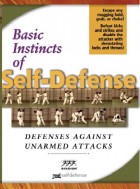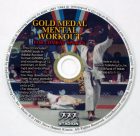This tip and the forthcoming one are about general principles of using edged weapons, whether for attack or for self-defense. Unlike blunt weapons, edged weapons require very little force to do great damage. With well-sharpened blades, a touch and press is usually all it takes to leave an unforgettable impression.
I write here only about the edged weapons most often used in street attacks (in the order of frequency of use): knives, machetes or cleavers, straight razors, sharpened bicycle spokes. I leave out many edged weapons, such as box cutters, hat pins, knitting needles, single- or double-edge razor blades, scissors, screwdrivers, and so on, because either their use is similar to those four (knife, machete, straight razor, bicycle spoke) or they are used rarely.
Edged weapons often used in street attacks: Knives and machetes
Knife: As a weapon, knives are used primarily for stabbing and secondarily for cutting. The simplest grips — the hammer grip and the ice-pick grip — are the most effective and versatile in a fight (for flowing from offense to defense in one motion). Knowledgeable attackers use this weapon in a series of short, noncommitted stabs and cuts that are practically impossible to stop. See examples in Self-Defense Tip #11 — Knife attacks.
The most difficult knife attacks to defend against are those coming from below at the lower abdomen, as the following quote shows: “Dying Corsican condottiere . . . whispered to a young retainer standing by his bedside: ‘I have no money with which to reward your service, but I will give you advice to last a lifetime — your thumb on the blade and strike upwards’” (Donn F. Draeger and Robert W. Smith. 1969. Asian Fighting Arts. Tokyo: Kodansha International).
Machete: Chopping and slashing are the primary actions. Similar to the knife, it can flow from offense to defense in one motion — say a chop at the upper body and on the way back a slash to the defending arm. See videos below on the potential of the machete:
Knives and larger blades such as machetes and cleavers are used in mass attacks. The preferred settings for mass edged-weapon attacks are crowded places where carrying of weapons is prohibited. The techniques depend on the weapon. For large blades, such as machetes and cleavers, these are slashes all over the body from all directions. For small blades, such as knives, these are mainly stabs to the trunk, most often to the lower abdomen.
To protect yourself from such attacks, stay away from crowds, be aware of who is behind you, and don’t be empty handed. A folded coat or a piece of hand luggage will make a shield. An umbrella can be used in ways shown in Self-Defense Tip #73 — Everyday objects as weapons of self-defense: Umbrella vs. knife.
Attention:
Applying any of the techniques mentioned above is your sole responsibility.
Neither Never-Thought-of-It LLC nor the author of this self-defense tip, nor persons pictured in this self-defense tip, make any representation, warranty, or guarantee that the techniques described or shown in this tip will be safe, effective, or legal in any self-defense situation or otherwise.
The reader or viewer assumes all risks and hazards of injury or death to herself, himself, or others, as well as any resultant liability for the use of the techniques and methods contained in this self-defense tip.
Specific self-defense responses demonstrated or described in this self-defense tip may not be justified in certain situations in light of all the circumstances or under the applicable federal, state, or local law. Neither Never-Thought-of-It LLC nor the author of this self-defense tip makes any representation or warranty regarding the legality or appropriateness of any techniques described or demonstrated in this self-defense tip.
Self-defense tip from Thomas Kurz, co-author of Basic Instincts of Self-Defense and author of Science of Sports Training, Stretching Scientifically, and Flexibility Express.
Self-Defense Moves
For your defense moves to work under stress they must be based on your natural, instinctive reactions, require little strength and limited range of motion, and be proven in fighting experience.To learn how your natural reactions can instantly defeat any unarmed attack, see the video Basic Instincts of Self-Defense.
Defend Against Weapons
To defend against weapons you have to know how they are used. Also — every stick has two ends … the weapon of attack may become a weapon of defense in your hand …To learn how the typical street weapons (club, knife, razor) are used by an experienced streetfighter and how to practice with them, see the video Self-Defense: Tools of Attack — Club, Hatchet, Blackjack, Knife, Straight Razor.
Mental Toughness
Staying cool under pressure is more important for self-defense than being physically fit and technically skilled. If you can’t control your mind what can you control?To learn mental techniques that let you calmly face any threat and act rationally in the heat of a fight, click here.
For a complete list of our products, click here.








Pingback: Cutting through: 10 Best Machetes and Guide - Survivor's Fortress